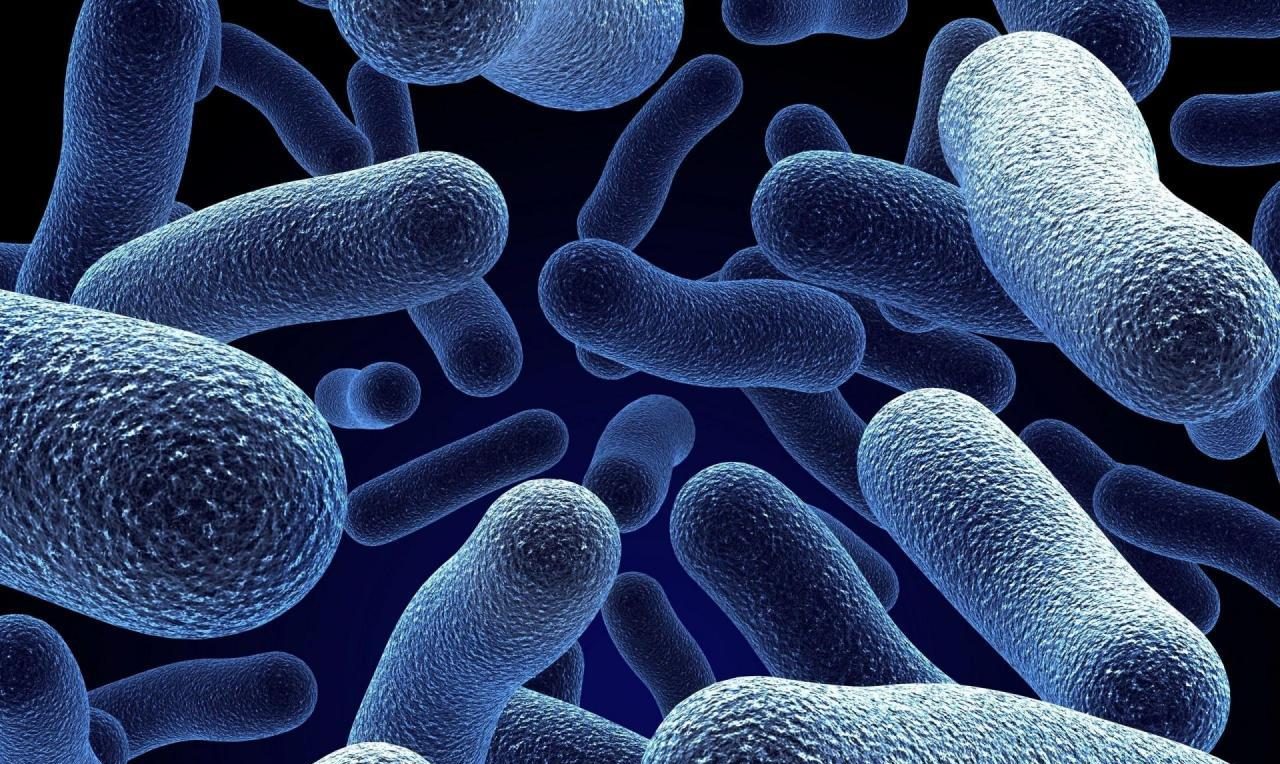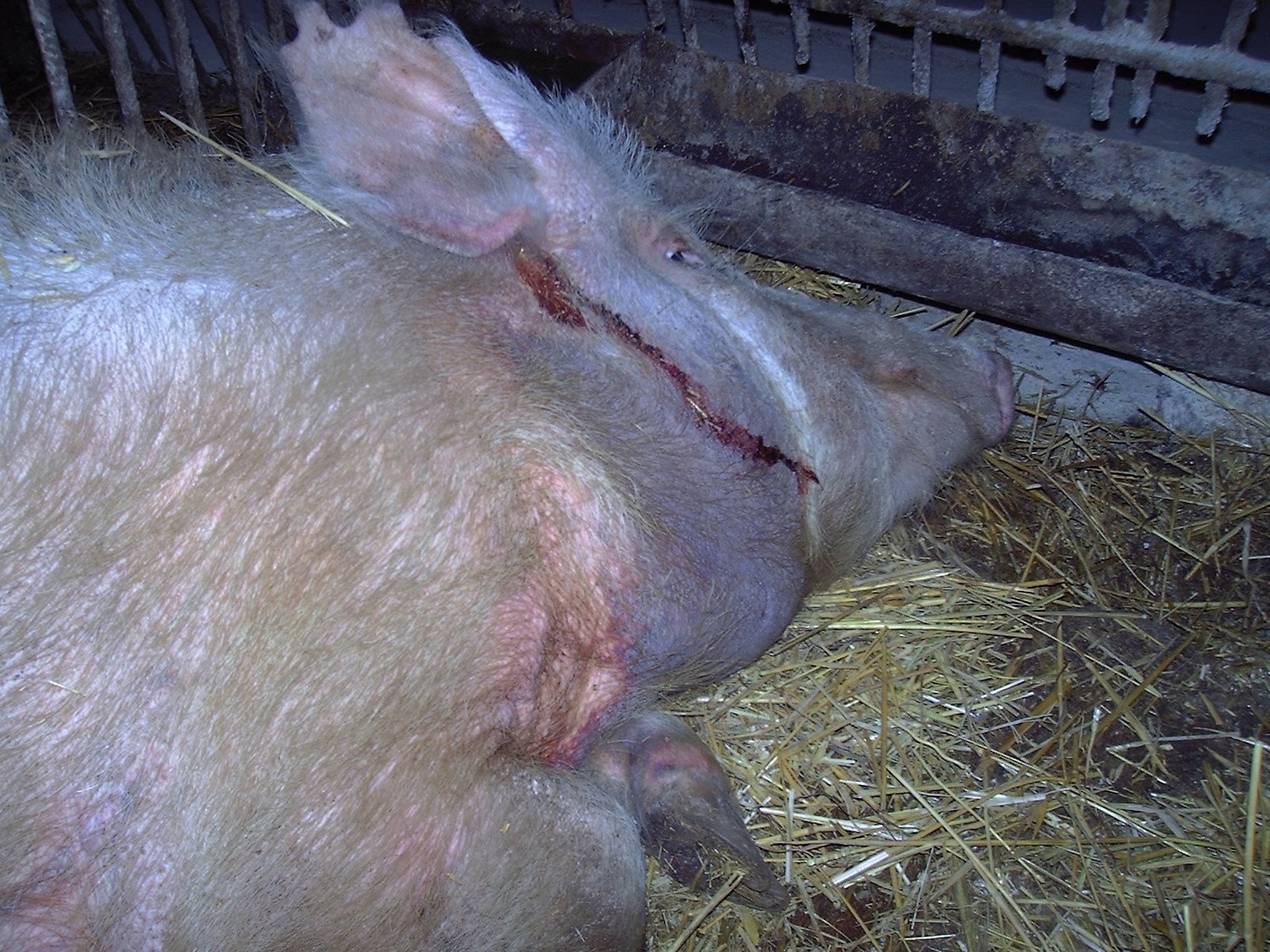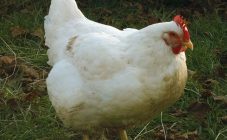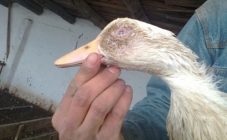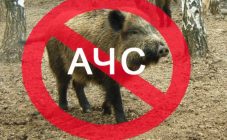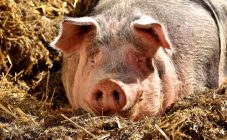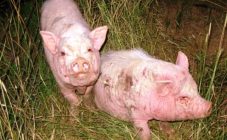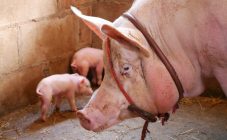Content:
Pig's erysipelas is a dangerous disease that affects not only them, but also other animals living on the farm. Horses, sheep, poultry are at risk. The disease is characterized by rapid spread, in a very short time a person can lose all livestock. An important point in pig breeding is the timely detection of diseases and taking the necessary measures. Next, we will talk about pig erysipelas, symptoms and treatment.
Causative agent
Erysipelas in pigs is an infectious disease, the causative agent is the bacterium Erysipelothrix insidiosa, which is found everywhere. One of the properties of a microorganism is its rapid adaptation to its environment.
The microorganism is able to remain for many months in the soil layer, aquatic environment, the carcass of a dead animal or slurry. Shows sensitivity to high temperature readings (dies at temperatures above + 70 ° C), certain antibiotics and disinfectants can also kill the bacteria.
Why does the disease occur
The main source of erysipelas in pigs is already sick individuals, which secrete pathogenic bacteria with feces and urine. As mentioned above, the pathogen can be in the external environment for a long time. Infection occurs through sources of drinking, food, inventory tools.
The pathogen is carried by parasitic insects, small rodents and birds. Giving birth is attributed to soil infections, and therefore the disease very often occurs seasonally, namely, in the summer months. A large number of healthy animals carry bacteria. Microorganisms in the latent stage are located in the tonsils and intestines.
The disease can begin to manifest itself as a result of stressful situations: with inadequate feeding, increased ambient temperature, weakening of the animal's body. All these reasons can lead to the outbreak of erysipelas starting without an external pathogen entering the farm.
What you need to know about symptoms
This disease has an incubation period of 1-8 days, in some cases the period may increase. Then the erysipelas develops in one of the following forms:
- lightning fast,
- subacute,
- sharp,
- chronic.
Lightning shape
Refers to a rare type of erysipelas. Most often, pigs of the age group of 210-300 days are ill with it. Especially if the conditions of transportation or maintenance are violated. The disease has sharp signs of manifestation.
Symptoms:
- the animal weakens quickly;
- there is a depressed state;
- a sharp rise in temperature;
- heart weakness develops;
- there are no skin rashes;
- a sick animal dies in a matter of hours.
Acute form
It is more common and may be accompanied by blood poisoning. Characterized by a sharp deterioration in the health of the sow, the temperature rises to 42 ° C and more. The individual begins to weaken, practically does not move, spends most of the time in a supine position. While walking, "woodiness" is visible.Piglets refuse to feed, suffer from constipation and vomiting.
Due to heart weakness, the lungs swell, which is manifested by shortness of breath and blue discoloration of the skin in the jaw and neck. The spots are characterized by a typical shape: at first they have a pale pink color, and then turn red. Spots may appear within the first two days after infection and not in all animals. If you do not start treatment for erysipelas in piglets, then there is a high probability of their death on the second or fourth day.
Subacute form
It is the most common type of ailment. First, skin rashes similar to urticaria appear, then edema appears, lymph nodes increase, and the temperature rises.
The pig has apathy and lethargy, it refuses to eat, consumes a large amount of liquid, tries to find a quiet place. After 24 hours, square, rounded or diamond-shaped spots form on the skin, turning pale when pressed. The duration of the disease is 2-7 days, in most cases the outcome is favorable.
Chronic form
It can occur due to a neglected ailment, less often it develops from a latent state. Tissue necrosis occurs, cardiac activity is impaired, and there may be other chronic complications.
Diagnostics
The acute and subacute form is identified by typical skin rashes and spots, as well as by other signs of the disease. The infection is unambiguously detected only after laboratory tests of some particles of internal organs, which were taken after the death of animals, are carried out.
How to treat
To cure animals, an integrated approach is used, consisting of symptomatic and special therapy. Duration of treatment is 5-7 days.
The livestock breeder should pay close attention to the feeding and watering of the pigs. Sick individuals are constantly thirsty, and therefore their drinkers must be filled with fresh water.
Answering the question of how to treat erysipelas in pigs, there are two main ways: the use of medications and folk methods.
Medicines
The greatest effect is obtained by the use of a special serum against erysipelas, together with which they give antimicrobial drugs with a wide spectrum of action. As a symptomatic treatment, antipyretic drugs, cardiovascular drugs, antihistamines and vitamins are used. Additionally, you need to use antibiotics prescribed by a veterinarian.
How to treat erysipelas in pigs at home with antibiotics? These funds are dissolved in anti-erysipelas serum and injected into the animal's body twice a day for 3-5 days.
Using folk remedies
Traditional medicine has suffered a crushing defeat in the fight against erysipelas. In veterinary medicine, there is not a single effective folk remedy, which would have a clear therapeutic effect. Some pig farmers cover the affected area with a cloth soaked in vinegar.
Effective and massive treatment of pigs is possible only with the use of medication. Otherwise, everything ends with a massive death of cattle. After the individuals finally recover, after 10 days, it is necessary to disinfect the skin and limbs, and then return to the general herd. All other animals must be vaccinated.
The disease is very dangerous for animals, and therefore the sooner it is detected, the better. Timely diagnostics will allow not only to find out in time how to treat erysipelas in pigs, but also to prevent the spread of the disease to all livestock.
